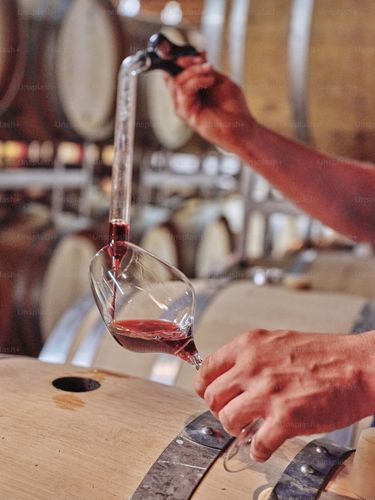Lambrusco, a name that immediately evokes Emilia, its traditions, culture, and the conviviality that defines it. This iconic and versatile wine has managed to conquer the world thanks to its lively freshness and its ability to adapt to multiple interpretations. Red or rosé, sparkling or semi-sparkling; dry or sweet: Lambrusco is a kaleidoscope of flavors, perfect for enhancing the dishes of Emilian cuisine and capable of surprising even in the most exclusive contexts.
Historically, Lambrusco was produced using the Ancestral Method, a technique that involves natural refermentation in the bottle without the addition of yeasts or sugars; a traditional process resulting from early bottling while fermentation was still ongoing.
Over the 20th century, thanks to the foresight of certain producers, new winemaking techniques such as the Charmat Method and the Traditional Method were introduced. The Charmat Method, which entails refermentation in steel tanks, was introduced in Emilia in 1959 by the Chiarli company and made Lambrusco an accessible and highly drinkable wine. The Traditional Method, adopted by the Bellei company, involves refermentation in the bottle, a complex and meticulous process that gives Lambrusco greater elegance, structure, and complexity.
Lambrusco production is mainly concentrated in the province of Modena but extends into those of Parma and Reggio Emilia as well as Mantua in nearby Lombardy.
Sixty percent of Emilia's annual production, currently amounting to 35 million bottles, is linked to six denominations: Lambrusco di Sorbara, Lambrusco Salamino di Santa Croce, Lambrusco Grasparossa di Castelvetro, Modena, Reggiano, and Colli di Scandiano e di Canossa. These are accompanied by the Emilia geographical indication.
Each denomination represents a particular facet of Lambrusco, but they all share wines with vibrant freshness and fruity aromas that contribute to their balanced taste. The three varieties tied to the "dedicated" denominations stand out for their unique features: Sorbara, with its light ruby-red color, shows limited structure and pronounced acidity; Salamino, with its compact cylindrical cluster resembling a small salami, boasts a deeper color along with good structure, a soft body, and medium acidity; Grasparossa, distinguished by the autumnal red coloration of its rachis and pedicels, has a reddish-purple hue, a structured, soft body, and low acidity.
The origins of Lambrusco grapes are lost in the mists of time. They are part of a large family of vines with 14 distinct varieties, which can be vinified as single-variety wines or blends. They descend from the ancient Vitis Labrusca, a wild vine (ruscum) that grew on the edges (labrum) of cultivated fields, producing grapes with significant tannin and acidity content. While the cultivated vine is documented as far back as the 14th century, as noted by Pietro De’ Crescenzi, the father of modern agronomy, Lambrusco experienced a real production boom starting in the 1970s, becoming a true "pop" icon. It emerged as one of the best-selling wines in Italy (and remains the top wine sold in organized retail today) and one of the most exported worldwide, particularly to the United States. There, it earned the nickname "Red Cola" due to its marketing in cans and its youthful image. While this moniker helped spread Lambrusco's name globally, it also altered its perceived quality.
In recent years, Lambrusco has experienced a renaissance, thanks to producers focusing on quality and territorial expression. Today, this wine is appreciated even in starred restaurants and has secured a place among the most sought-after labels.
A significant promotional effort includes the creation of World Lambrusco Day, an event designed for international audiences and held triennially on the summer solstice. The first edition was hosted in Paris in 2023, with the second planned for New York in 2026. Meanwhile, the celebration is organized annually in one of Italy's major cities; in 2024, it was held in Matera.
Today, Lambrusco is a wine that unites tradition and innovation, simplicity and sophistication. With its versatility, it suits every occasion. Savoring a glass is like embarking on a sensory journey through the heart of Emilia, ready to captivate and enchant anyone willing to be charmed.
